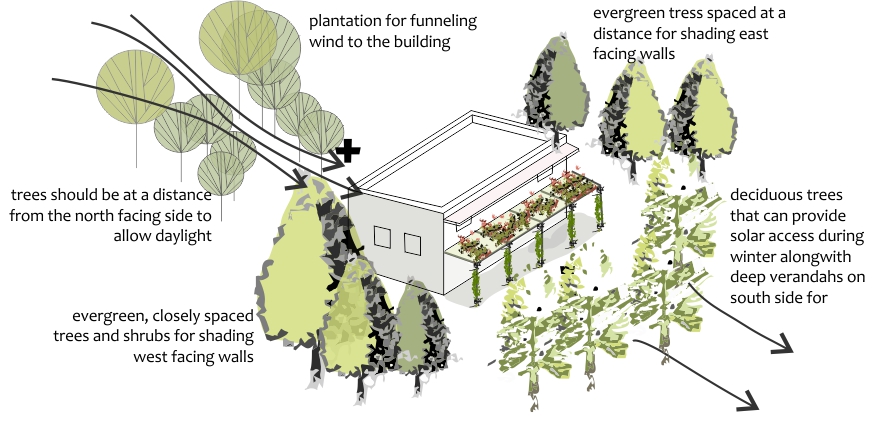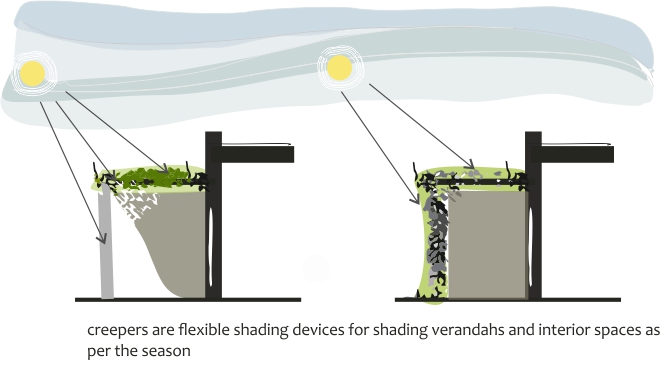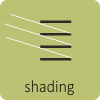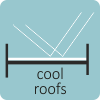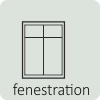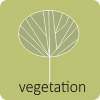Trees and shrubs create different air flow patterns, provide shading and keep the surroundings cooler in warm weather. Vegetation can be used for energy conservation in buildings in the following ways:
- Shading of buildings and open spaces through landscaping
- Roof gardens (or green roofs)
- Shading of vertical and horizontal surfaces (green walls)
- Buffer against cold and hot winds
- Changing direction of wind
Vegetation is a flexible controller of solar and wind penetration in buildings. It reduces direct sun from striking and heating up building surfaces and lowers the outside air temperature which in turn effects the heat transfer from outside to building envelope and interior. It can also be used as internal shading element. Used as such, plants increase the shading coefficient, a measure of the efficiency of shading devices, without compromising on external views. Plants moreover grow in the direction of sunlight and the growth varies with seasons and when used keeping in mind seasonal variations at the building location, can be cost effective, flexible shading elements.
Vegetation also alters the micro-climate of a site and has been used as micro-climate manager for as long as buildings have been built. This is possible through evapotranspiration. Plantation also shades building surfaces and open ground, thus inducing lower surface temperatures. Since this shading is almost permanent, the low temperatures do not vary much even when exposed to harsh radiation occasionally during hot seasons.
Green roofs or roof gardens can also be used as they help to reduce heat loads in a building. The additional thickness of the growing medium provides extra thermal insulation. These also retain moisture from rainwater further cooling the roof surface. The green cover lowers ambient temperatures through evapotranspiration. Green roofs can be categorised as intensive, extensive and modular bocks. The biggest difference is with respect to the depth of soil and resultantly, the type of vegetation that can be supported in each of the types. Soil depth in intensive green roofs is at least 300mm, in extensive roofs about 25 to 125 mm, and in modular blocks about 100mm. Roof structures have to be sturdy for supporting green roofs as these impose greater dead weights than normal roofs.
Proper landscape design and vegetation can be used effectively by architects from an early design phase to lower the ambient temperature and thus reducing the resulting demand for air conditioning loads in a building.
Table:Indian tees suitable for shading and as windbreakers
| SHADING | Arjun | Large deciduous tree |
| Imli (Tamarind) | Evergreen tree | |
| Sheesham | Evergreen tree | |
| Neem | Good shade tree | |
| Scholar or Ditabark or Pulai (Alstonia scholaris) | Evergreen tree | |
| Kanak champa (Pterospermum acerifolium) | Evergreen tree | |
| Jacaranda | Semi- evergreen or deciduous tree | |
| Gold Mohar (Delonix regia) | Costal and windy areas | |
| Indian Laurel (Calophyllum inophyllum) | Evergreen tree | |
| Indian Rosewood | Provides broken shade; direct sun can reach the ground | |
| Barringtonia | Southern India and its costal regions | |
| Indian Padauk or Burmese Rosewood | Evergreen tree | |
| Indian Parasol | Deciduous tree | |
| Frangipani (Plumeria Acutifolia) | Deciduous tree | |
| Baheda | Deciduous tree | |
| Indian Beech (pongamia glabra) | Dense shade; deciduous for short periods | |
| Bhendi | Evergreen tree | |
| Copper Pod | Semi- deciduous tree | |
| WINDBREAKERS | Tamarind | |
| Neem | ||
| Cassurina equisetifolia | ||
| Indian Rosewood | ||
| Indian Siris (Alibilzia lebbeck) | ||
| Indian Beech (pongamia glabra) | ||
| Black Plum (Eugenia jambolona) |
Table is based on information presented in Sustainable Building Design Manual- Volume 2, by the Asia Urbs Programme and Institut Catala d’Energia.

